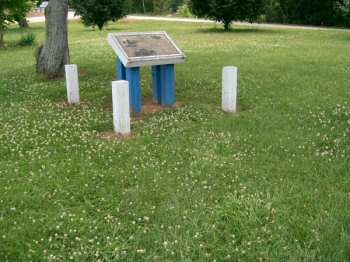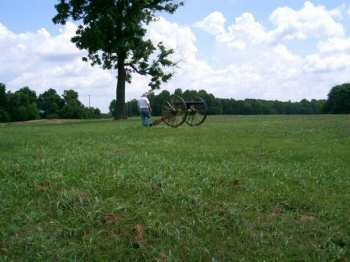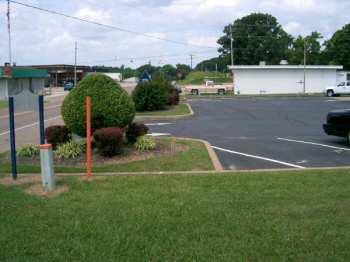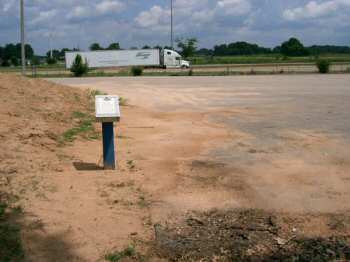|
The Crossroads (west
view)
In 1862 the Lexington-Huntingdon Road ran past the
foreground of this picture to a junction with a farm road, visible on the
left, thus forming Parker's Crossroads; the modern crossroads is marked by
the light.
On the morning of the 31st, Federal Colonel Cyrus L. Dunham arrived at
this crossroads, and learning that Forrest was approaching the crossroads
from the northeast, sent out the 50th Indiana Infantry, part of the 18th
Illinois Infantry, and three guns of the 7th Wisconsin Battery. Forrest
advanced skirmishers through the field, and then deployed one gun of
Freeman's battery. Soon, the 7th Wisconsin's guns had responded, but
Freeman's gun got the better of the fight, and had soon dismounted one of
the Union cannons. Federal skirmishers entered the field, intent on
silencing the Confederate artillery, but were soon thrown back by
Freeman's shots of canister. Freeman then called upon his other five guns.
The added weight of the five Southern guns pummeling them with fire caused
the Federals to begin an orderly withdrawal toward the crossroads |
|
Lieutenant Colonel Alonzo Napier Killed (North View)
Surprisingly, Dunham ordered another assault to be made against Forrest's
artillery. As the Union troops executed the order, Confederate Lieutenant
Alonzo Napier assaulted the Federal left flank from the northwest. Napier,
with several of his men, reached the rail fence at this point, where the men
crouched down along the side of fence. Wishing to inspire his men to
continue the attack, Napier leapt onto the fence, and soon fell mortally
wounded. (The location of Napier's mortal wounding is marked in the above
photo by the blue and white sign.)
Forrest now determined to execute a double-envelopment of the Union
line |



